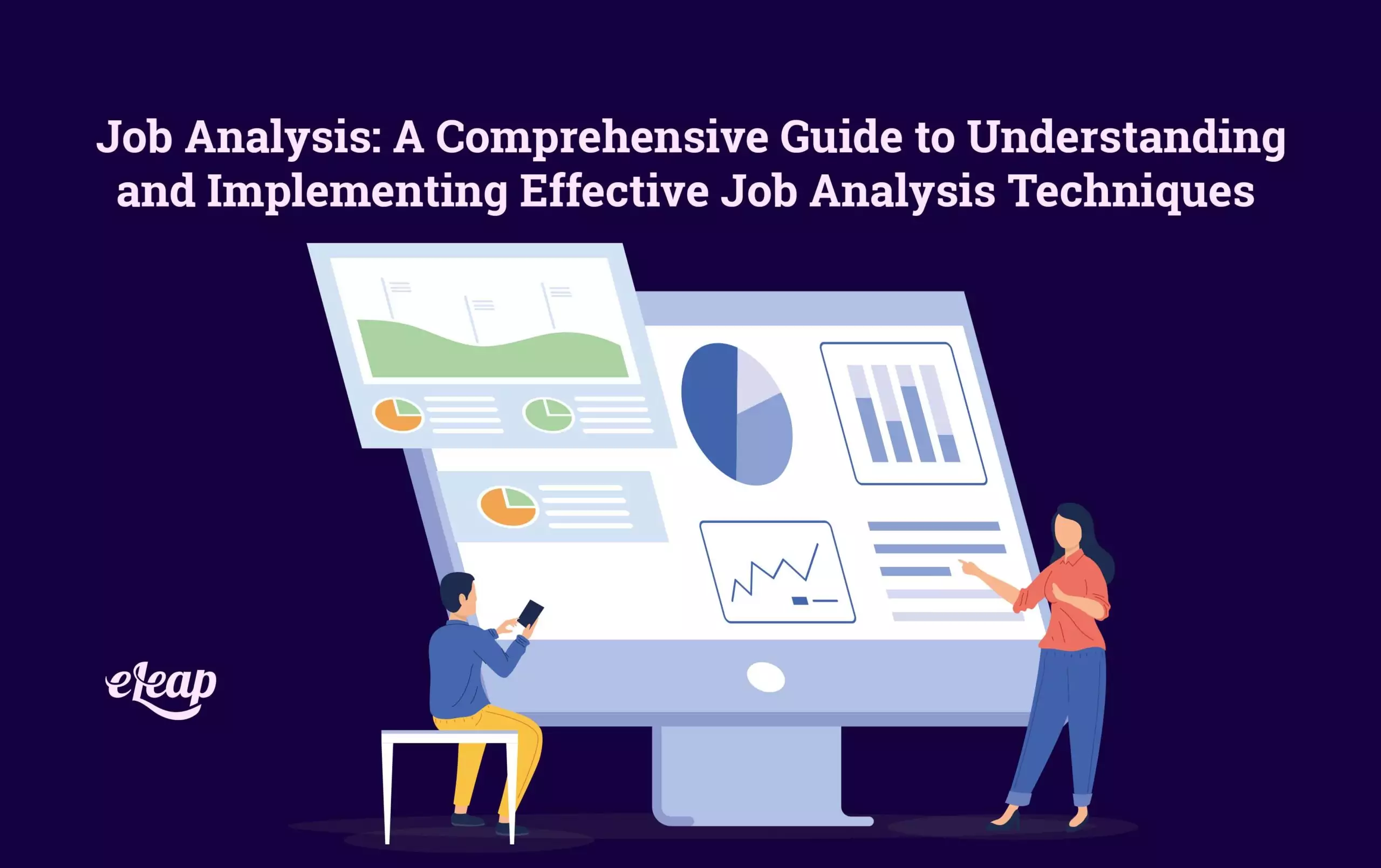Job Analysis: A Comprehensive Guide to Understanding and Implementing Effective Job Analysis Techniques

A well-defined work role aligned with an organization’s objectives is critical to attracting and retaining top talent in today’s competitive job market. Job analysis plays a crucial role in achieving this goal. By conducting a thorough work analysis, organizations can gain valuable insights into each position’s requirements, responsibilities, and competencies. The purpose of this article is to provide a comprehensive guide to understanding and implementing effective work analysis techniques.
Understanding the nature and scope of every organizational role is essential to effectively align employees’ skills and experiences with their jobs. This process, known as work analysis, involves evaluating the tasks, responsibilities, and skills needed for an appointment to ensure it contributes to an organization’s overall goals.
What is Job Analysis?

It’s a systematic way to collect, analyze, and present information about the content of work as a basis for job descriptions, training, performance evaluations, and recruitment. It evaluates not just the tasks and responsibilities of a work but also the skills, knowledge, and abilities (often abbreviated as SKAs) required to fulfill it effectively.
Definition and Importance of Job Analysis
Job analysis refers to the systematic process of gathering and analyzing information about the tasks, responsibilities, knowledge, skills, and abilities required for a particular work role within an organization. It provides a foundation for various HR functions such as recruitment, selection, performance management, training, and compensation. Work analysis helps organizations understand the intricacies of each work role, enabling them to make informed decisions regarding work design, employee development, and organizational effectiveness.
Critical Components of Job Analysis
The critical components of work analysis include:
Job Title: The specific title or designation of the work role.
Job Summary: A brief overview of the work , highlighting its primary purpose and objectives.
Work Duties and Responsibilities: A comprehensive list of tasks and responsibilities associated with the job.
Work Requirements: The qualifications, skills, experience, and competencies required to perform the job successfully.
Working Conditions: The environmental and physical conditions in which the work is performed.
Reporting Structure: The hierarchical relationship and reporting lines associated with the job role.
Benefits of Job Analysis
Job analysis offers several benefits to both organizations and employees. Some of the key advantages include:
Improved Recruitment and Selection: By clearly defining job requirements and competencies, organizations can attract suitable candidates and make informed hiring decisions.
Enhanced Performance Management: work analysis helps set realistic performance standards and evaluate employees based on objective criteria.
Practical Training and Development: Understanding job tasks and competencies enables organizations to develop targeted training programs to enhance employee skills and performance.
Equitable Job Evaluation and Compensation: work analysis provides the foundation for developing fair and consistent job evaluation systems and determining appropriate compensation levels.
Legal Compliance: By ensuring job analysis processes align with legal requirements, organizations can minimize the risk of discriminatory practices and maintain compliance with equal employment opportunity laws.
-
Job Analysis Process
Preparing for Job Analysis
Before conducting a work analysis, it is essential to establish clear objectives and determine the scope of the investigation. Critical steps in the preparation phase include:
Identify the Jobs: Determine which jobs within the organization require analysis.
Form a work Analysis Team: Assemble a team of subject matter experts and stakeholders who possess a deep understanding of the job roles.
Define Analysis Methods: Select appropriate methods and tools to gather job-related data.
Plan the Data Collection Process: Determine the timeline, resources, and logistics required for data collection.
Collecting Job Analysis Data
Data collection involves gathering information about job tasks, responsibilities, knowledge, skills, and abilities. This can be achieved through various methods, including:
Interviews: Conduct structured or unstructured interviews with incumbents, supervisors, and other relevant stakeholders to gather insights about job requirements.
Questionnaires: Administer questionnaires to incumbents and supervisors to collect comprehensive information about job-related aspects.
Observation: Observe employees performing their job tasks to gain firsthand knowledge of the job requirements and work environment.
Job Performance Data: Analyze existing performance data, such as productivity metrics, error rates, or customer feedback, to understand job performance expectations.
Analyzing work Analysis Data
Once the data is collected, it needs to be carefully analyzed to identify patterns, commonalities, and variations in job requirements. This analysis helps identify essential job tasks, critical competencies, and areas for improvement.
Documenting work Analysis Results
The final step in work analysis is to document the findings and create work descriptions and specifications. work descriptions provide a detailed overview of work tasks, responsibilities, and reporting relationships, while job specifications outline the qualifications, skills, and competencies required for successful job performance.
Conclusion
Job analysis is vital in today’s dynamic work environment, helping organizations align their workforce with business objectives and improve overall efficiency and effectiveness. By understanding the intricacies of each work role, organizations can make informed decisions related to recruitment, selection, training, and performance management. Implementing effective work analysis techniques ensures that organizations clearly understand work requirements and can foster a productive and engaged workforce.
Frequently Asked Questions (FAQs)
What is the primary purpose of job analysis?
Work analysis aims to gather and analyze information about work tasks, responsibilities, and requirements to make informed decisions regarding work design, recruitment, selection, training, and compensation.
What methods can be used for collecting job analysis data?
Standard methods for collecting work analysis data include interviews, questionnaires, observation, and analysis of job performance data.
How does work analysis benefit organizations?
Work analysis helps organizations improve recruitment and selection, enhance performance management, facilitate practical training need analysis and development, ensure equitable job evaluation and compensation, and maintain legal compliance.
What are the critical components of work analysis?
The critical components of work analysis include job title, job summary, duties and responsibilities, job requirements, working conditions, and reporting structure.
Why is work analysis necessary for legal compliance?
Job analysis ensures that organizations comply with equal employment opportunity laws by minimizing the risk of discriminatory practices in recruitment, selection, and performance management.